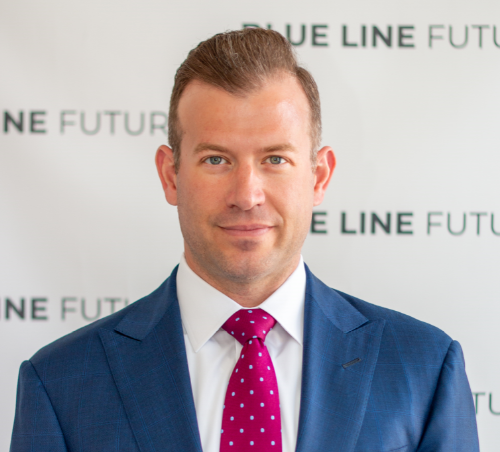
Bill Baruch is a frequent contributor to CNBC, Bloomberg and The Wall Street Journal. He recently elected to use the TT platform as part of his CTA offering, and we’re taking this opportunity to learn more about how Bill got to where he is today.
Bill started his career as an investment banking analyst, then moved into commodities when he joined Lind Waldock at the Chicago Board of Trade. He went on to build three businesses in the futures space: Blue Line Futures, a futures and commodities brokerage, Blue Line Capital, an investment advisor operation, and Blue Creek Capital, a commodity trading advisor (CTA). You can find Bill on Twitter at @bill_baruch.
How did you get into trading and what has been your path to where you are today?
Bill: From a very young age, I always gravitated to markets. It started with looking through the stock almanac that published prices with my grandfather. I began trading gold in college with my dad. I left a job as an investment banking analyst nine months after graduating college and took a job for Lind Waldock at the CBOT, and the rest was history.
You recently launched a CTA, Blue Creek Capital Management. What is the objective of Blue Creek and what are its selling points?
Bill: Blue Creek’s goal is to offer a completely uncorrelated asset class. Many invest in commodities without realizing how intersected markets are, and this leaves them with correlated exposure to equity markets. We currently offer two programs, Macro Diversified and Energy Alpha. We are not trying to blow the doors off with 30-50% returns because in order to hit that, one must be taking exorbitant amounts of risk. Our objective is 1-3% per quarter.
Why did you choose to use the TT platform with your new CTA?
Bill: The Energy Alpha program trades a multi-dimensional arb spread, and TT’s Autospreader is a terrific fit. Many platforms cannot handle placing futures spreads with more than two legs, leaving part of the order off-exchange. TT’s Autospreader allows our spreads to work as one entire order, which helps for ease of placing and to avoid slippage. We also utilize TT’s algo capabilities for backtesting in sample optimizations and modeling for our two current programs as well as a third, which we plan to launch in the second half of this year.
Are you a user of the micro equity index products at CME? What has made these instruments so incredibly popular?
Bill: Our Macro Diversified program uses them to perfectly hedge deltas. Three years ago, I laughed at the launch of micro-index products. At the time, I was trading at least 2-5 lot positions consistently and working with clients slinging orders of 100 lots plus. I became immune to the rising value of the index itself, and always having to evolve my risk management. When volatility really exploded in March last year, for my own trading and the accounts I hold discretion, I began trading the micros and couldn’t believe how easy it was to size the positions exactly to how I wanted. It occurred to me that just because the NQ is 6x larger than it was a decade ago, it doesn’t mean I need to be trading 6x larger than I was a decade ago. This also fits within my overall strategy very well as I believe one of my best skills is sizing. Over the last few years, I have been doing more and more on the securities side too, launching my RIA Blue Line Capital in 2019. The micros freed me up from having to be glued to the screen hours on end. Now, I use them for everything I can, including gold and silver.
Do you have any memorable market events you’d like to share?
Bill: Early on, as a broker at Lind Waldock, I learned the importance of risk management. I would often see crazy attempts by clients on their own to strike it big, but there was one instance that stands out most. This is because it also dealt with the psyche. In late 2007 when wheat had already doubled from $4 to $8, a client at our desk faded it and faded it, sending millions and millions of dollars to cover margin. He withstood a move above $13 in February 2008 and profited from the crash down. This allowed him to think he was bigger than the markets and his pocket was the only risk management tool needed. Welp, later that year natural gas went from $6 to $13.50 and he blew up.
